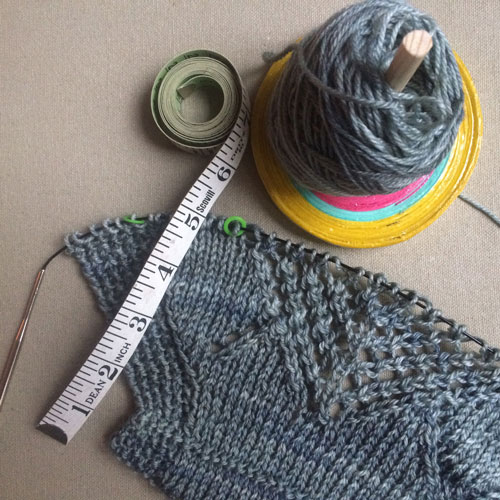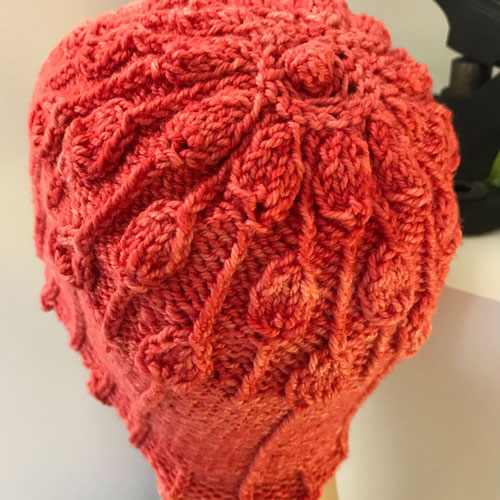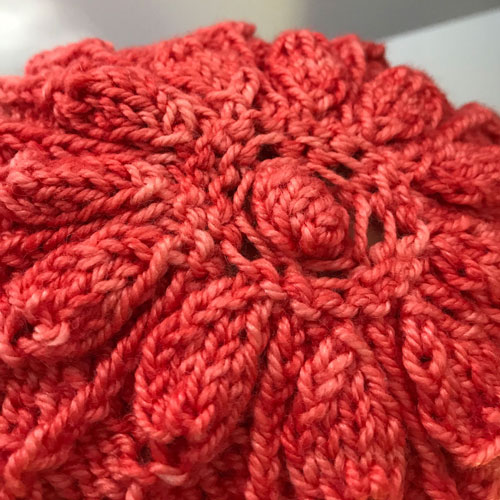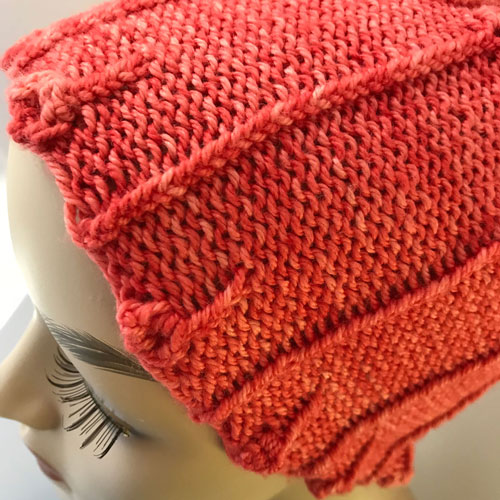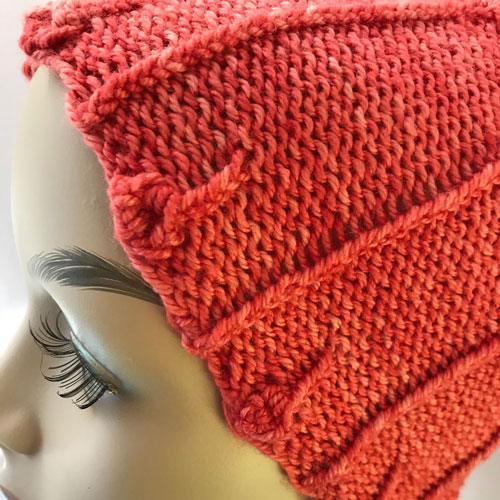Meet the Yarn: Cloud
Jill Wolcott
passion.fashion.knits
Cloud
80% Superwash Merino, 10% Cashmere, 10% Nylon
+/- 575 yd / 525 m
8.5-9 sts / in US #1
I have chosen Cloud to redo three projects in my pattern catalog. Things change, and although I loved the original yarn, it is time to re-make them in something that lots of people use and/or want to use. My samples are in Black Cherry and Blush.
Cloud is another example of an Anzula yarn where a small percentage of cashmere makes a huge difference. This lovely heavy lace weight sells for about $34-36 skein. The yardage is good at 575 yards (525m). It is a simple 2-ply of 80% super wash Merino, 10% cashmere and 10% nylon in the unique tonal coloration we know and love in Anzula Luxury Fibers. Cloud almost reminds me of a Suri alpaca. It has a halo, but not a hard-to frog one (trust me, I always do some ripping!). Want to know more about Cashmere? Check out this blog where I took a look at Cricket. This is a yarn that looks different after a wet blocking!
I did my first swatch on US size 3(3.25mm) needles, thinking of it in terms of making a garment, and it does a nice garter and stockinette, a lovely seed stitch, and a slightly loose rib. I then swatched in in a seed stitch, purl cable, and 3x3 rib for Snow Farm. I love Snow Farm and its sister pattern Roundhill for their slightly girly look, in fairly tailored yarn and stitch patterns. The texture shines in this smooth yarn with the tiniest halo to it. I also worked it up in Remarkables. This tiered shawlette is a favorite for mine. Again, a somewhat flamboyant piece that remains slightly tailored in Cloud. This is a look I really like.
I’ve been thinking about Cloud for a while, and I’ve been looking at projects on Ravelry (1543) as well as the stashes (1919). Cloud has been used to make everything from complex lace to rib socks. From baby hats to color work. It has been made into garments, hand accessories, and lots of shawls. There are quilts of many colors, stranded color work, cables, stockinette, lots of laces and eyelets, garter stitch, brioche. There are many familiar patterns, and others I’m glad I took the time to look at. Lots of Perfect Fit Socks. I loved this pair with red toes and heels. There was double knitting, and I loved this pullover. There are also lots and lots of Pioneer Cuffs, and this project for a man’s sweater. One of my other favorite garments is this. There are adorable baby sweaters. I saw a few of A Hint of Summer, but I loved this one in particular. A few knitters have mentioned that the yarn can be a little slippery.
I wanted to challenge myself by making a man’s scarf in two colors with the leftovers of Blush & Black Cherry . It is hard for me to design masculine; I’ve been observing what scarves men are wearing when I’m out walking. I’m using a very simple stitch pattern, and I’m working on size US size 2 (2.75mm) using two longer Brittany dpns because I’m looking for some efficiency.
My unblocked gauge numbers in this stitch pattern are 31 stitches and 46 rows to 4” OR 7.75 sts and 11.5 rows to 1”. After wet and steam blocking in my stitch pattern the gauge changes to 45 stitches and 43 rows to 4” OR 11.25 sts and 10.75 rows to 1”. Take a look at my blog on January 17 for the final outcome and the pattern.
Let’s take a look at my gauge numbers from my exploration swatches to help you plan your Cloud projects! I used a US size 3(3.25mm)
I like to know where I’m going to end up, which can be quite different from what I see when I’m knitting. isn’t always what the end result will be. Remember this to help you when choosing stitch patterns:
- More stitches per inch when blocked = narrower piece [garter, seed, 1x1 rib above]
- Fewer stitches per inch when blocked = wider piece
- More rows per inch when blocked = shorter piece [1x1 rib above]
- Fewer rows per inch when blocked = longer piece [garter, seed above]
- There was no change in the gauge in Stockinette, although my Stockinette always looks smoother and more even after blocking.
Keep up on all things Jill Wolcott:
Contact: jill@jillwolcottknits.com
Blog: http://www.jillwolcottknits.com/category/blog/
Twitter: @jillwolcottknit
Instagram: @jillwolcottknits
Pinterest: Jill Wolcott Knits
www.JillWolcottKnits.com



















